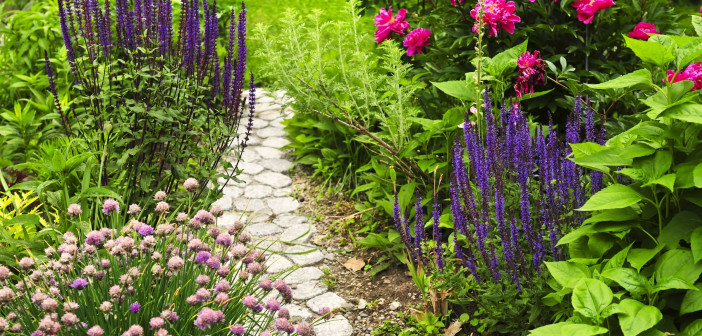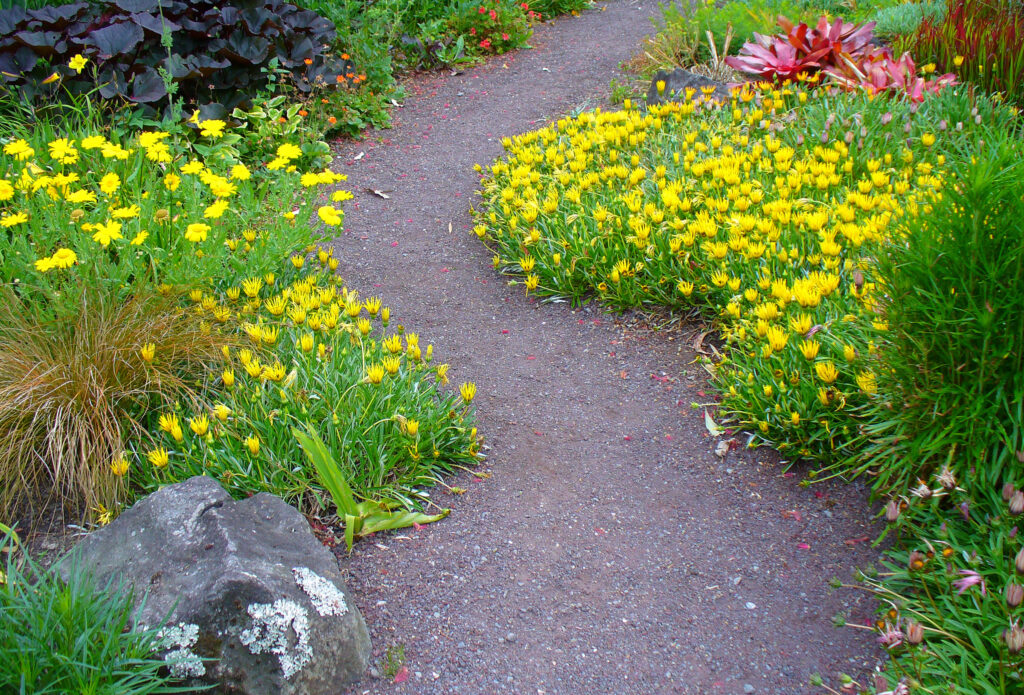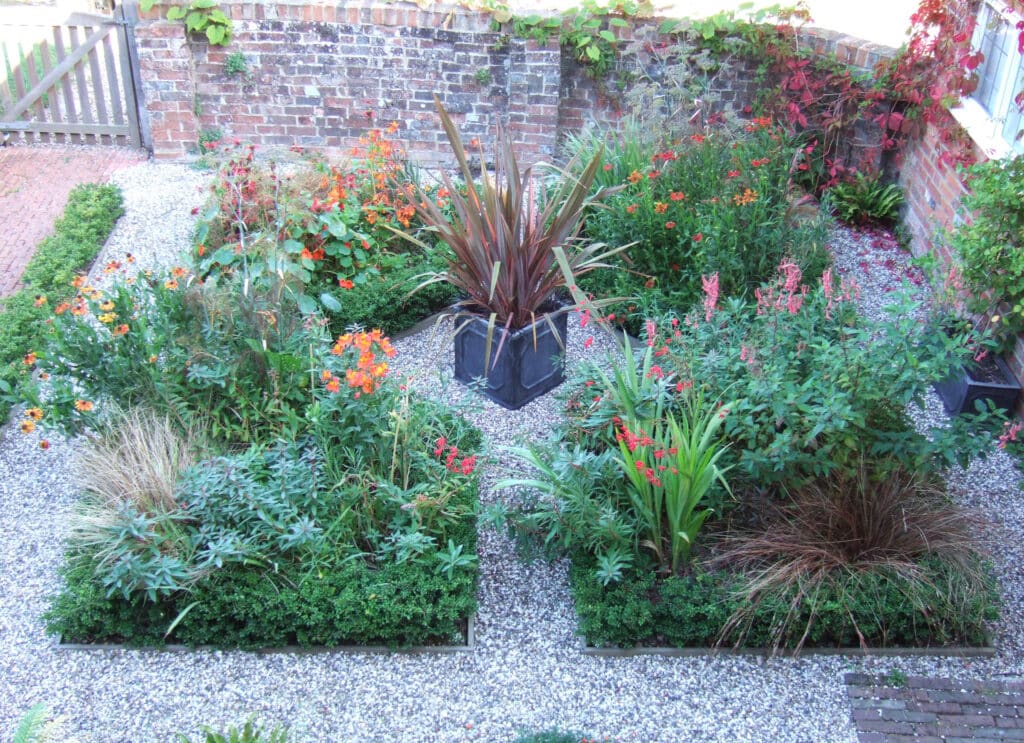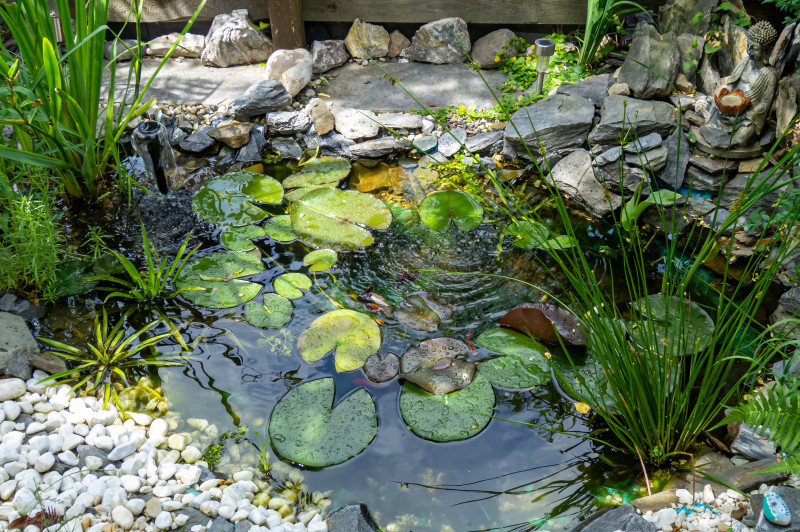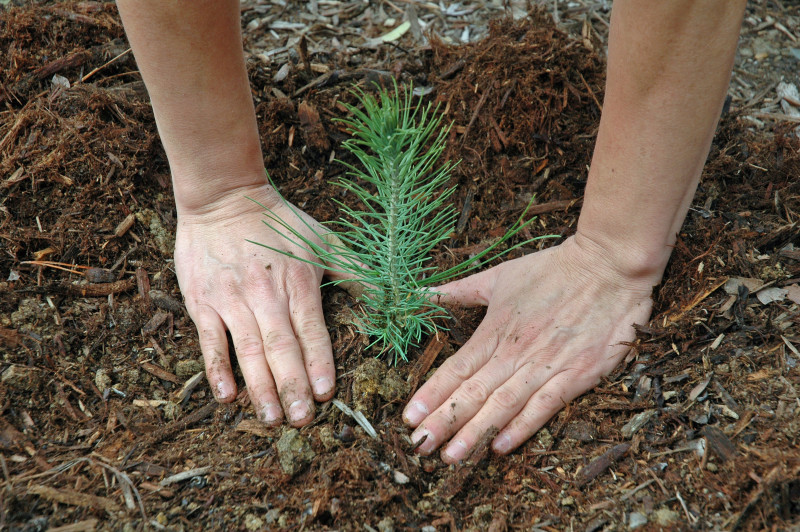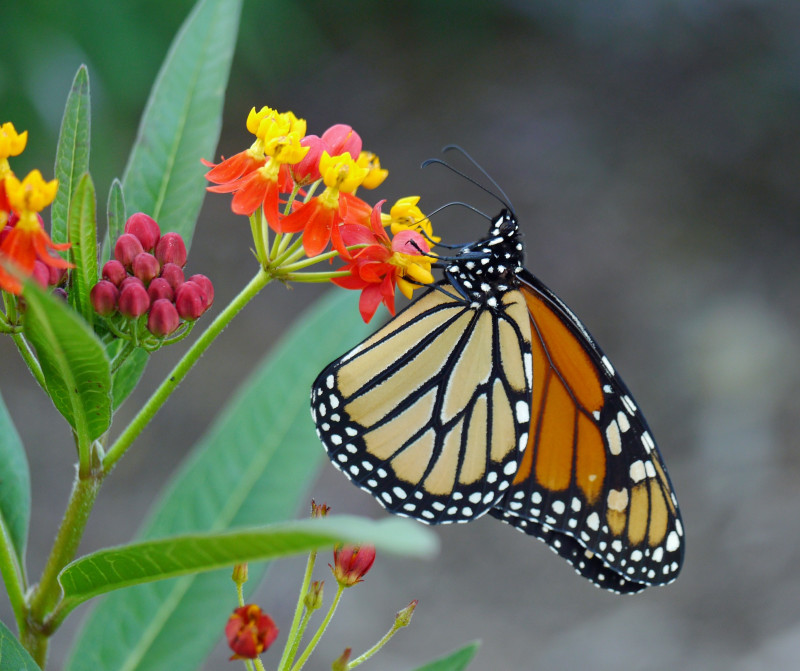Creating a backyard wildlife habitat offers a unique opportunity to connect with nature while beautifying your yard. Thoughtfully laid out paths are integral to this process, not just for aesthetic appeal but also for the habitat’s functionality. Paths and gardens go hand in hand. Here’s how you can achieve both attractive and practical elements in your garden design.
Laying out paths
1. Planning your path layout
- Assess usage: Consider how often and by whom the paths will be used. This affects the width and material choice. Pathways that facilitate close and quiet wildlife observation are ideal for a backyard wildlife habitat.
- Map the most natural routes: Observe the natural flow of your yard and place paths accordingly. Curving paths mimic natural trails and invite exploration, while straight paths can be used for more formal or direct routes.

This rock and wood path creates a natural look and flows around flower beds. (Jnzl’s Photos / Flickr; CC BY 2.0)
2. Choosing path materials
- Mulch: Soft underfoot and gentle on the environment, mulch is biodegradable and integrates seamlessly into a natural garden. It also enriches the soil as it breaks down.
- Gravel: Durable and offering excellent drainage, gravel is low maintenance and provides a crunchy sound underfoot, which can be pleasant for a sensory garden experience.
- Stepping stones: Placed within a lawn or groundcover, stepping stones reduce the amount of grass and maintain natural aesthetics. They are perfect for minimal-impact paths.
- Decomposed granite: This is granite that has weathered so much that it easily fractures into smaller pieces of weak rock. It blends well with natural surroundings, making it a popular choice for garden paths in dry climates. It provides a more stable pathway than mulch or gravel.
3. Benefits of reducing turf grass with paths
- Environmental impact: Less turf grass means reduced water usage and lower chemical inputs such as fertilizers and pesticides. This is better for the plants and animals.
- Soil health: Using permeable materials like mulch or gravel improves soil health by allowing water to infiltrate and reducing runoff.
- Biodiversity: Paths can act as corridors connecting different parts of a garden or leading to larger ecosystems, encouraging biodiversity.
Designing flower gardens
1. Layout considerations
- Start with structure: Use evergreens or shrubs to form the backbone of your garden, providing year-round interest and structure.
- Layer with variety: Incorporate various heights, colors, and textures to create a visually engaging space. Start with taller plants at the back and graduate to shorter ones at the front.
- Use native plants: They’re adapted to your local climate and provide local wildlife the best food and habitat. They also require less water and care compared to non-native species.
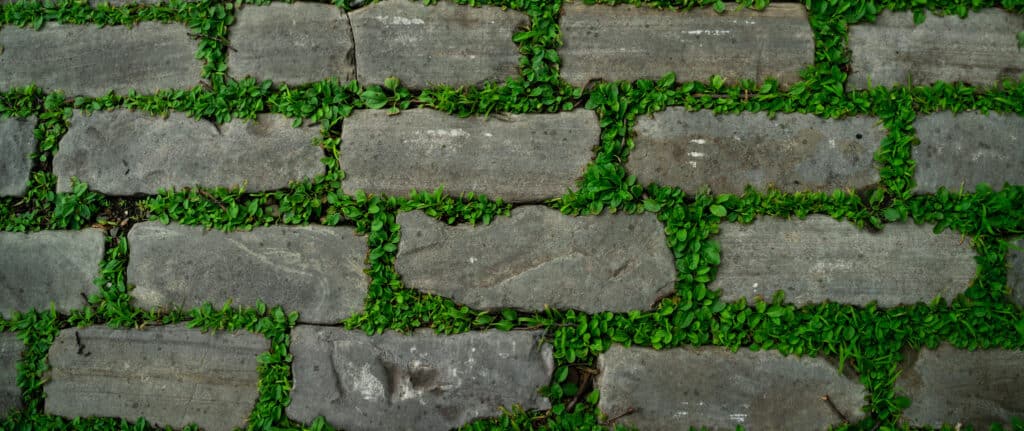
A simple stone path surrounded by groundcover lends an air of antiquity. (John Brighenti / Flickr; CC BY 2.0)
2. Garden design tips:
- Seasonal interest: Plan your garden so that different plants take turns showcasing their beauty. Ensure there’s always something blooming from early spring to late fall.
- Attracting wildlife: Include plants that provide nectar, seeds, and berries. Layer your plant choices to create dense canopies and open sunlit areas, mimicking natural habitats.
- Accessibility: Ensure that paths allow easy access for maintenance without harming plants. Consider raised beds or bordered areas for easier upkeep.
Thoughtfully designed paths and flower gardens are a harmonious approach that creates a sanctuary for you and the myriad wildlife you want to share in your outdoor space.
Mulching makes a difference
How to provide nesting places for wildlife
Squirrels: frequent questions

